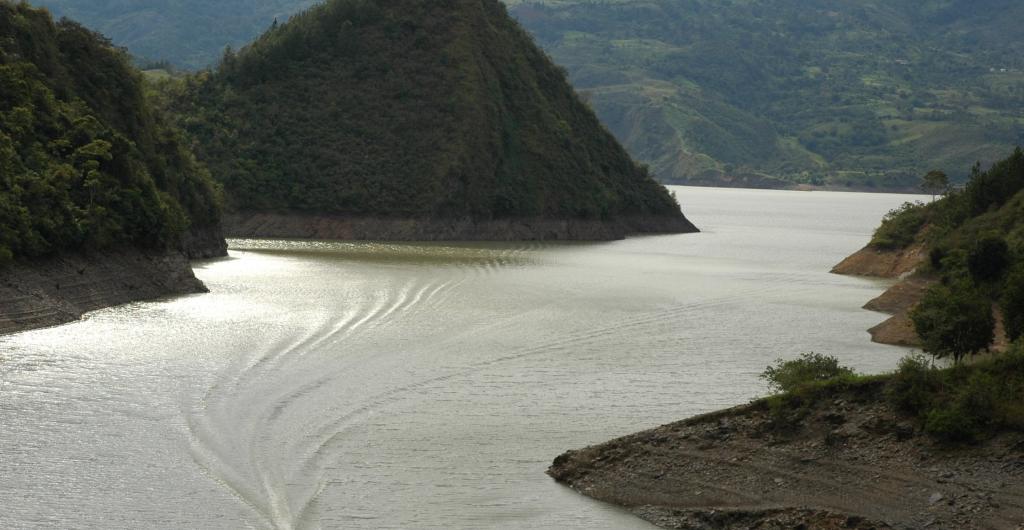According to XM figures, energy generation in the sixth month of the year was 6,817.74 GWh, 4.61% more than the same month of the previous year.
The operator of the Interconnected System and administrator of the Wholesale Energy Market of Colombia (XM) revealed that in June 2025 the level of energy generation reservoirs closed at 82.3%, which represented an increase compared to the level of 57.94% reported a year ago.
With this, the entity highlighted that, so far in July 2025, water contributions are at 130.01% of the historical average and the reservoir is 0.15 points below the closing value on June 30, standing at 82.2% of its capacity as of July 9.
“As of June 30, the aggregate level of the System’s reservoir stood at 6.30 (82.3%) points above the reference path (76.05%) established by the Energy and Gas Regulation Commission – Creg”, added the entity.
And until July 9, the aggregate level of the system’s reservoir stood 5.59 (82.36%) points above the reference path (76.77%) established by the Creg.

Water contributions are around 70.62%. Additionally, the current level of the useful volume of the reservoirs for energy generation is 36.76%.
How were the water contributions in June?
Within the report delivered by XM, it was highlighted that water contributions closed in June with an accumulated average of 135.7% (381.42 gigawatts – hour GWh-month) above the historical average of that month (281.07 gigawatts – hour GWh-month).
With the above, the largest water contributions from the regions were: East with 129.04%, Valley with 120.35%, Center with 159.84%, Antioquia with 132.16%, Caldas with 111.96% and Caribbean with 134.19%, compared to the historical average of each region.
With this pace, the spills were also located, which, during the past month, reported water evacuated from the reservoirs with a value of 3,478.06 GWh.
In the breakdown, the reservoirs that have spilled during June were: Ituango with 1,152.15 GWh (33.12%), Guavio with 661.04 GWh (19%), El Quimbo with 465.95 GWh (13.39%), Betania with 403.09 GWh (11.59%), Porce II with 187.28 GWh (5.38%), Esmeralda with 173.99 GWh (5%), Ríogrande II with 165.81 GWh (4.77%), Porce III with 128.84 GWh (3.70%), Topocoro with 109.05 GWh (3.13%), Playas with 30.83 GWh (0.89%) and Troneras with 0.69 GWh (0.02%).

Hydroelectrics
This is how energy generation was
According to the information provided by the system operator, in total, 6,817.74 GWh were generated in June. With which, on average during the month, energy generation was 227.26 GWh-day, 0.73% less compared to the generation of May 2025 which was 228.94 GWh-day.
88.98% of the generation, equivalent to 202.22 GWh-day average, was the result of renewable resources, while the remaining 11.02%, equivalent to 25.03 GWh-day average was from non-renewable resources.
Therefore, the energy source with the greatest contribution was hydraulic generation with 93.1%, equivalent to 188.28 GWh-day average, 2.81% below the previous month.
By energy source, hydroelectric plants with reservoirs were the largest contributors with 82%, equivalent to 165.83 GWh-day average (1.37% below the previous month), while run-of-river plants (those that do not have a reservoir or if they do, their emptying time is less than or equal to a day), contributed 11.1% equivalent to 22.45 GWh-day, 12.31% less than the previous month.

ENERGY RATES
With respect to Non-Conventional Renewable Energy Sources -FNCER- it was noted that during the month of June 2025 solar plants generated an average of 10.85 GWh-day, representing 5.37% of the total renewable generation (0.63% more compared to May 2025), while wind plants contributed 0.25% of the renewable generation equivalent to 0.5 GWh-day (23.81% more compared to May 2025).
It was also highlighted that the total generation with non-renewable resources, that is, fossil fuels for June was 25.03 GWh-day average (10.45% more compared to the previous month).
By energy source, generation with coal represented 20.92%, equivalent to 5.24 GWh-day average (10.27% more compared to the previous month), national gas with 24.92%, equivalent to 6.24 GWh-day average (0.91% less compared to the previous month), finally, imported gas with a participation of 53.67%, equivalent to 13.44 GWh-day average (15.96% more compared to the previous month).
Another data highlighted in the report is that so far in 2025 there is an accumulated value of 106.12 GWh of energy purchased compared to 295.12 GWh of energy sold, which reinforces the importance of interconnections between different countries for energy complementarity between systems.
Source: Energy – Portafolio








